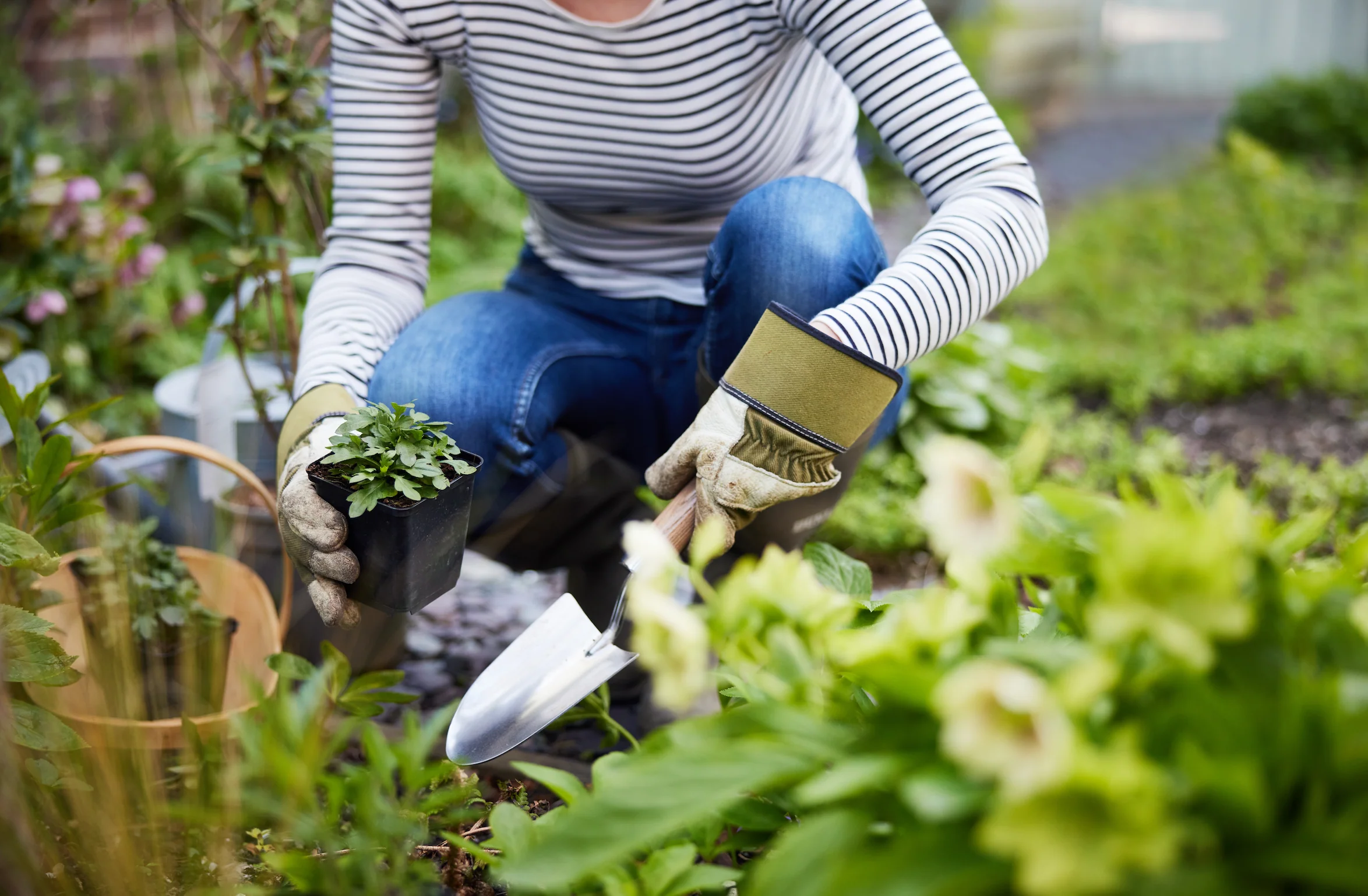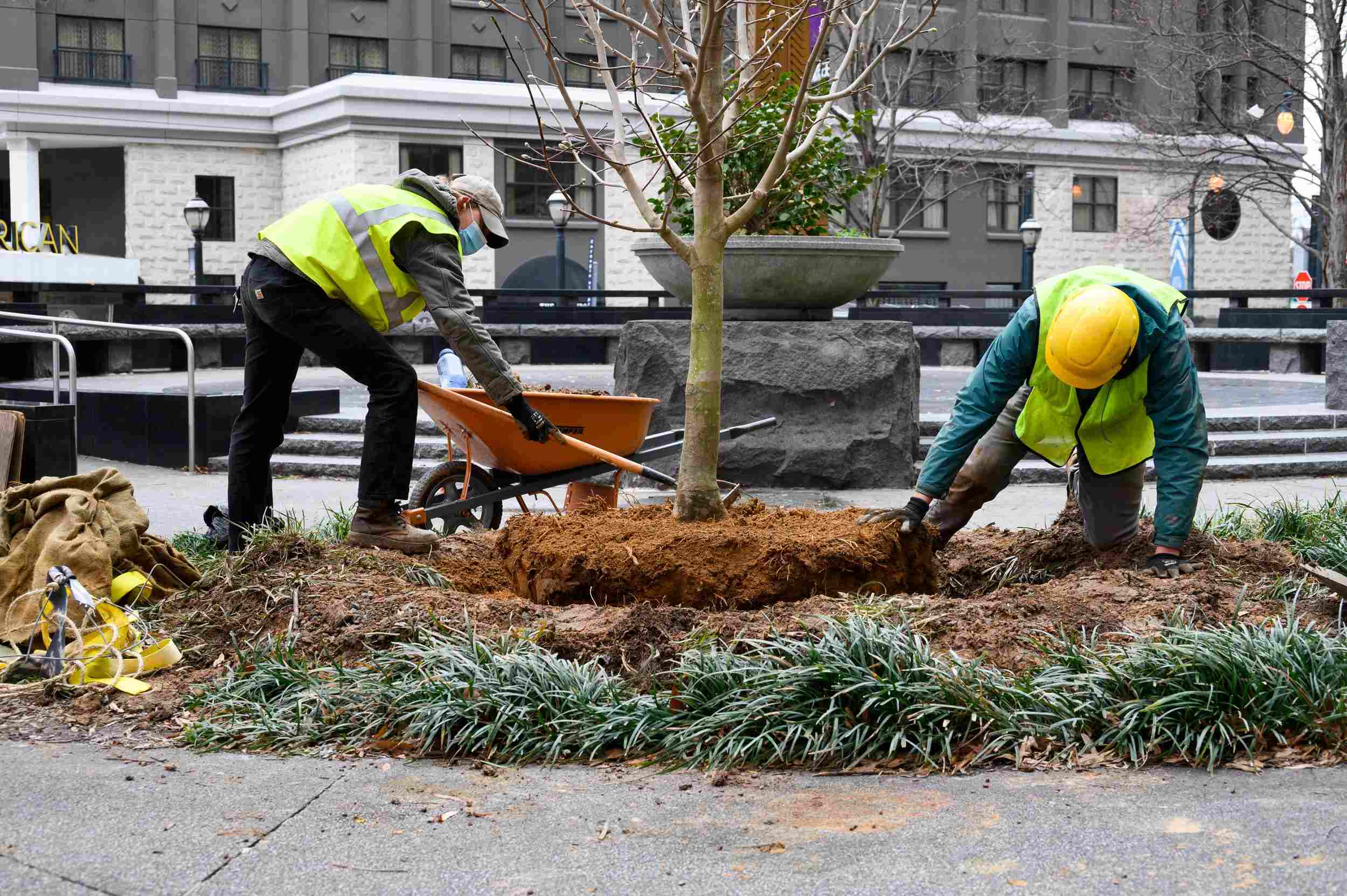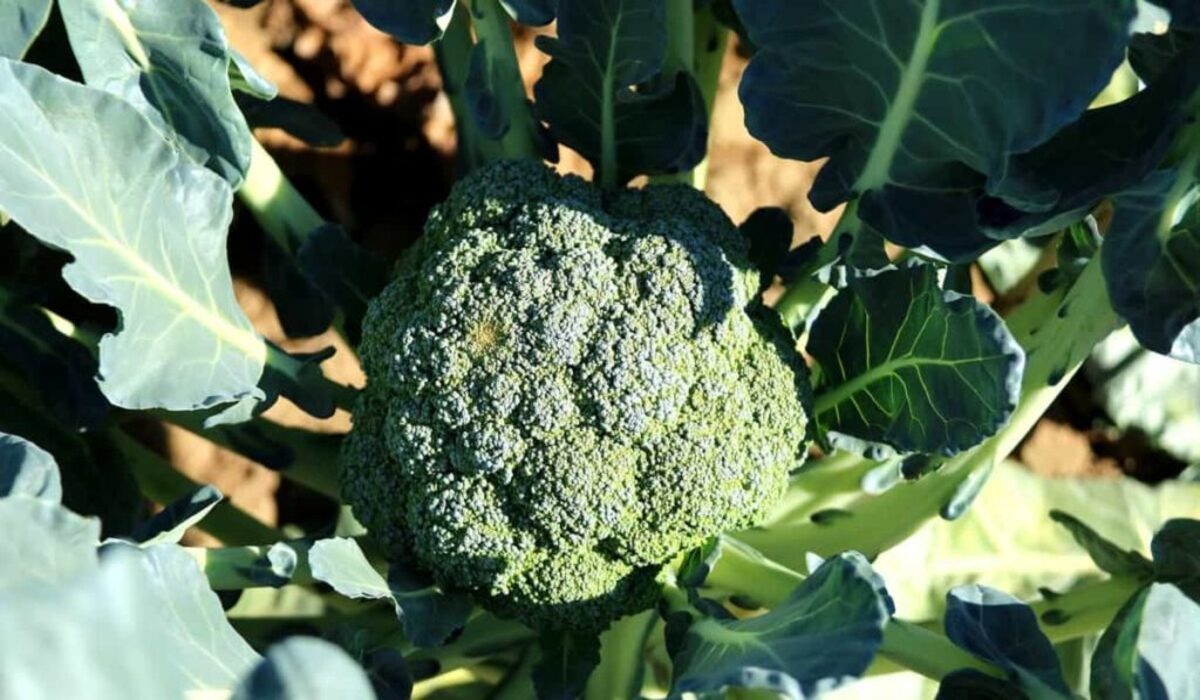Home>Types of Gardening>Ornamental Gardening>What Trees Are Blooming Now In Georgia


Ornamental Gardening
What Trees Are Blooming Now In Georgia
Modified: January 22, 2024
Discover the beautiful trees currently blooming in Georgia. Enhance your ornamental gardening with a wide variety of flowering options.
(Many of the links in this article redirect to a specific reviewed product. Your purchase of these products through affiliate links helps to generate commission for Chicagolandgardening.com, at no extra cost. Learn more)
Table of Contents
Introduction
Welcome to the beautiful world of ornamental gardening in Georgia. With its diverse climate and fertile soil, this southern state is a paradise for garden enthusiasts. Whether you are a seasoned gardener or just beginning to explore the wonders of ornamental plants, Georgia offers a vast array of stunning blooms that will add color and charm to your outdoor space.
As you embark on your gardening journey, it’s important to stay updated on which trees and plants are currently flowering. This knowledge will not only help you plan your garden more effectively but also allow you to appreciate the beauty of nature as it unfolds before your eyes. In this article, we will delve into the various trees that are currently blooming in Georgia, showcasing their unique characteristics and offering tips on how to incorporate them into your ornamental garden.
From the delicate cherry blossoms to the vibrant azalea blooms, Georgia’s ornamental trees offer a visually breathtaking experience. As you explore the different species, keep in mind the specific soil and sunlight requirements for each tree, as well as their potential size and maintenance needs. By selecting the right trees for your garden and providing them with the care and attention they deserve, you can create an enchanting landscape that will leave both you and your guests in awe.
So, grab your gardening tools and join us as we discover the current beauties that adorn the gardens of Georgia. Let’s dive into the world of cherry blossoms, magnolia flowers, dogwood blooms, azalea blossoms, peach tree flowers, redbud blooms, Bradford pear blooms, saucer magnolia blooms, and tulip tree flowers. Each of these trees has its own unique personality and charm, and by incorporating them into your ornamental garden, you can create a captivating oasis right in your own backyard.
Cherry Blossoms
One of the most iconic and eagerly anticipated events in spring is the blooming of cherry blossoms. These delicate and ethereal flowers transform the landscape, blanketing it with shades of pink and white. In Georgia, the blooming of cherry blossoms is a sight to behold.
The most common variety of cherry blossom tree in Georgia is the Yoshino cherry, with its pale pink flowers that beautifully contrast against the blue sky. These trees typically bloom in late March or early April, depending on the weather conditions. The blooming period is relatively short, lasting only about two weeks, so it’s important to make the most of this fleeting beauty.
If you’re interested in incorporating cherry blossom trees into your ornamental garden, it’s crucial to select a suitable spot with full sun exposure. Cherry blossoms prefer well-draining soil, so make sure the area has good drainage. These trees also require regular watering, especially during dry spells, to ensure healthy growth and blooming.
When it comes to pruning cherry blossom trees, it’s best to do so shortly after they finish flowering. This allows the tree to focus on regenerating its energy for the next blooming season. Pruning should be done selectively, removing dead or damaged branches to maintain the tree’s overall health and shape.
Cherry blossom trees not only provide stunning visual appeal but also attract pollinators such as bees and butterflies. Their blossoms create a captivating atmosphere, perfect for outdoor gatherings and relaxing moments in your garden. Capture the essence of Japanese gardens by incorporating cherry blossom trees into your landscape, creating a serene and peaceful ambiance.
Attracting visitors from all over the region, the blooming of cherry blossoms in Georgia is a magical event. Whether you choose to admire these blossoms in public parks or have your very own cherry blossom tree in your garden, their beauty is sure to captivate and inspire.
Magnolia Flowers
Magnolia trees are renowned for their stunning and fragrant flowers that grace the Georgia landscape each spring. These majestic trees offer a captivating display of beauty, with their large, showy blooms in shades of white, pink, and even purple.
One of the most popular and widely planted magnolia varieties in Georgia is the Southern Magnolia (Magnolia grandiflora). Known for its glossy evergreen leaves and large white flowers, this tree adds a touch of elegance to any garden. The sweet fragrance of the flowers fills the air, beckoning nearby pollinators.
When selecting a location for planting a magnolia tree, make sure to choose a spot with full to partial sun exposure. Magnolias prefer slightly acidic, well-draining soil and should be watered regularly, especially during dry spells. Mulching around the base of the tree helps retain moisture and provided added insulation.
In terms of maintenance, magnolia trees are relatively low-maintenance. Pruning should be done sparingly and only to remove dead or damaged branches. Pruning immediately after flowering is recommended to avoid interfering with the next season’s bud development.
Magnolia flowers are not only visually stunning but also attract a variety of wildlife, including bees, butterflies, and hummingbirds. Their large, cone-shaped blossoms create a focal point in any garden and can be used as cut flowers in floral arrangements to bring their beauty indoors.
Aside from the Southern Magnolia, there are other varieties of magnolia that grow well in Georgia, such as the Star Magnolia (Magnolia stellata) and the Saucer Magnolia (Magnolia x soulangeana). Each of these varieties offers its own unique charm and can be incorporated into your ornamental garden to create a stunning display of magnolia flowers.
With their timeless beauty and delightful fragrance, magnolia flowers enrich the landscape and evoke a sense of tranquility. Whether planted as a focal point or used to create a beautiful backdrop for other flowering shrubs and perennials, magnolia trees are sure to impress and enchant observers.
Dogwood Blooms
The blooming of dogwood trees in Georgia is a highly anticipated event that signals the arrival of spring with its bursts of vibrant colors. Known for their delicate flowers and unique bracts, dogwoods are a beloved ornamental tree that adds charm and elegance to any landscape.
The most common variety of dogwood found in Georgia is the Flowering Dogwood (Cornus florida). This medium-sized tree features clusters of small, four-petaled flowers in shades of white, pink, or red. What makes dogwoods truly special is their showy bracts, which are modified leaves that surround the true flowers and provide an eye-catching display.
When choosing a location to plant a dogwood tree, consider its preference for partial shade. Dogwoods thrive in well-drained soil, so it’s important to amend the planting area with organic matter to improve drainage. These trees require regular watering, especially during dry periods, to maintain healthy growth and blooming.
Pruning of dogwood trees is best done during late winter or early spring when the tree is still dormant. It is important to remove any dead, damaged, or diseased branches to promote overall tree health. It’s also a good idea to selectively thin out some branches to improve air circulation and allow more light to reach the interior of the tree.
Besides their visual appeal, dogwood blooms attract a variety of wildlife, including butterflies and birds. Their nectar-rich flowers provide a valuable food source for pollinators, enhancing the biodiversity in your garden. The ornamental value of dogwood trees extends beyond their blooming period as well, with their distinctive foliage turning vibrant shades of red in the fall.
Whether used as a focal point in the garden or as a backdrop for other flowering plants, dogwood trees never fail to impress with their stunning blooms. Their elegant and graceful presence adds a touch of beauty to any landscape, making them a cherished addition to ornamental gardens in Georgia.
Azalea Blossoms
When it comes to vibrant and captivating spring blooms, azaleas take center stage in Georgia. These stunning flowering shrubs are known for their abundant and colorful blossoms, adding a burst of beauty to gardens and landscapes.
Azaleas come in a wide range of colors, including shades of pink, purple, red, and white. Their flowers can be single or double, and their glossy green foliage provides an attractive backdrop for the blooms. These easy-to-grow shrubs are a popular choice for both garden enthusiasts and professional landscapers.
Georgia’s warm climate and acidic soil create the ideal conditions for azaleas to thrive. These plants prefer partial shade, with morning sun and afternoon shade being ideal. When planting azaleas, it’s important to ensure proper soil preparation by adding organic matter such as compost or pine bark to improve drainage and acidity.
Azaleas require regular watering, especially during dry periods, as they have shallow root systems. Mulching around the base of the plants helps retain moisture, regulate soil temperature, and discourage weed growth. Fertilizing once or twice a year with a slow-release azalea fertilizer will provide the necessary nutrients for healthy growth and blooming.
Pruning azaleas should be done immediately after flowering to avoid removing next year’s flower buds. Remove any dead or diseased branches, as well as thinning out crowded areas to improve air circulation and shape the plant. It’s important to note that excessive pruning can reduce blooming, so it’s best to keep pruning to a minimum.
Azalea blossoms not only add color and beauty to the landscape but also attract pollinators such as bees and butterflies. Their nectar-rich flowers provide a valuable food source, contributing to the overall health and biodiversity of your garden. Azaleas can be planted as individual specimens or grouped together to create a stunning display.
Whether you prefer the classic Southern indica azaleas or the evergreen Kurume or Satsuki azalea varieties, introducing these colorful shrubs into your ornamental garden will create a visual feast for the eyes. The elegance and vibrancy of azalea blossoms make them a true gem in the springtime landscape of Georgia.
Peach Tree Flowers
Georgia is famously known as the Peach State, and one of the most delightful sights in the state is the blooming of peach tree flowers. These delicate and fragrant blossoms not only symbolize the arrival of spring but also promise a bountiful harvest of juicy and flavorful peaches in the summertime.
Peach trees (Prunus persica) are a staple in orchards and home gardens across Georgia. They produce clusters of showy flowers in shades of pink and white, creating a stunning display. The vibrant blooms typically emerge in late winter or early spring when the weather starts to warm up.
When planting peach trees, it’s important to select a location that receives full sun exposure. Peach trees require at least six to eight hours of sunlight daily to thrive and produce a plentiful crop. They also need well-draining soil to prevent waterlogging, as excessive moisture can lead to root rot.
Proper irrigation is essential for the healthy growth and blooming of peach trees. These trees have shallow root systems, so regular watering is necessary, especially during dry periods. Mulching around the base of the trees helps conserve soil moisture and inhibits weed growth, providing a more favorable environment for their development.
Pruning peach trees is crucial for maintaining their structure and improving fruit quality. It’s best to prune peach trees during the dormant season to remove dead or diseased wood, as well as to shape the tree and encourage air circulation. Thinning out excess branches will allow sunlight to penetrate the tree, promoting fruit development.
Aside from their visual appeal, peach tree flowers attract bees and other pollinators, ensuring the successful pollination of the blossoms and the subsequent formation of fruit. They also provide a lovely fragrance that fills the air, creating a delightful and enchanting atmosphere.
Whether you have an orchard or a small backyard garden, adding peach trees to your landscape not only enhances its natural beauty but also grants you the pleasure of enjoying homegrown, flavorful peaches. The vibrant display of peach tree flowers in the spring is just the beginning of an exciting journey that culminates in the sweet reward of a delectable harvest.
Redbud Blooms
In the early days of spring, as winter fades away, the blooming of redbud (Cercis) trees paints the Georgia landscape with splashes of vibrant pink and purple. These native trees are cherished for their unique blossoms, which adorn the branches before the emergence of leaves.
Redbud trees are admired for their captivating flowers, which create a stunning contrast against the still-bare branches. The flowers appear in clusters along the stems and produce a beautiful spectacle when in full bloom. Their colors range from soft pink to deep magenta, depending on the variety.
Planting redbud trees in your ornamental garden is relatively easy, as they are adaptable to various soil types. They prefer moderately fertile, well-draining soil and thrive in areas with full or partial sun exposure. When selecting a location, take into consideration their potential size as they can grow to be 20 to 30 feet tall.
Redbud trees require regular watering, especially during the first few years of growth, to establish a strong root system. After that, they are generally drought-tolerant and require less maintenance. Mulching around the base of the tree will help retain soil moisture and suppress weed growth.
Pruning redbuds should be done in late winter or early spring while the tree is still dormant. This is the best time to remove any dead, damaged, or crossing branches to maintain the tree’s health and shape. Light pruning can also help promote better flower production and overall symmetry.
Aside from their visual appeal, redbud blooms attract a variety of pollinators, including bees and butterflies, to your garden. With their nectar-rich flowers, redbuds not only provide a valuable food source for these pollinators but also contribute to the overall biodiversity of the area.
Whether planted as a standalone specimen or added to a mixed border, redbud trees make a stunning addition to any landscape. Their unique blossoms captivate the eye, and their graceful branches add an architectural element to the garden. Enjoy the beauty of redbud blooms as they announce the arrival of spring in Georgia’s ornamental gardens.
Bradford Pear Blooms
When it comes to early spring blossoms in Georgia, the Bradford Pear (Pyrus calleryana ‘Bradford’) takes its place among the most enchanting ornamental trees. These trees burst into a profusion of delicate white flowers, transforming the landscape with their ethereal beauty.
The Bradford Pear is renowned for its showy and abundant flowers that blanket the tree’s branches. These clusters of white blooms create a stunning visual impact and emit a delightful fragrance, adding an alluring charm to any outdoor space. The flowers typically emerge in early spring, signifying the awakening of nature after the winter months.
Bradford Pear trees are versatile and adaptable, thriving in a variety of soil types. They prefer full sun exposure but can tolerate partial shade. When selecting a planting location, ensure proper drainage to avoid waterlogged soil, which can negatively impact the tree’s health and blooming capacity.
Regular watering is essential for young Bradford Pear trees, especially during the first two years of establishment. Once established, they are relatively drought-tolerant and require less frequent watering. Adding a layer of organic mulch around the base of the tree will aid in moisture retention and weed control.
It’s important to note that Bradford Pear trees have a distinctive growth habit that tends to be pyramidal and upright when young, but can become relatively broad and irregular as they mature. Regular pruning is recommended to maintain the tree’s shape, remove dead or crossing branches, and promote better air circulation.
In addition to their visual allure, Bradford Pear blooms attract pollinators such as bees and butterflies with their nectar-rich flowers. This makes them not only a delightful sight but also a valuable resource for supporting the local ecosystem and promoting biodiversity.
Bradford Pear trees are often used as ornamental accent trees in gardens, parks, and along streets. Their striking blooms create a focal point in the landscape, offering a beautiful backdrop for other flowering plants. Their display of flowers also makes them a popular choice for wedding venues and outdoor events.
As the Bradford Pear trees bloom and transform the landscape, they bring a sense of renewal and beauty to the ornamental gardens of Georgia. Embrace their stunning display and let their delicate flowers inspire awe and wonder in your outdoor space.
Saucer Magnolia Blooms
One of the most breathtaking sights in early spring in Georgia is the blooming of Saucer Magnolia (Magnolia x soulangeana) trees. These stunning ornamental trees herald the arrival of the season with their large and vibrant flowers, creating a truly enchanting display.
Saucer Magnolias are known for their show-stopping blossoms that appear before the emergence of leaves. The flowers are goblet-shaped and vary in color, ranging from pure white to shades of pink and purple. The vibrant blooms, often streaked with delicate patterns, give an air of elegance and grace to any landscape.
When planting Saucer Magnolia trees, choose a location that receives full sun to partial shade. These trees prefer well-draining soil and thrive in areas with moderate moisture levels. Adequate irrigation is crucial during hot and dry periods to maintain healthy growth and promote the longevity of the flowers.
Pruning Saucer Magnolias should be done right after flowering to avoid interfering with future blossoms. Light pruning can help maintain the desired shape and remove any dead or diseased branches. A proper pruning technique will enhance the tree’s overall health and ensure its continued beauty in the years to come.
The striking blossoms of Saucer Magnolias not only create a visual spectacle but also emit a delightful and lingering fragrance. Their scent wafts through the air, making them an inviting addition to any garden. The fragrant flowers attract bees and other pollinators, contributing to the overall health of the ecosystem.
Saucer Magnolia trees are often used as focal points or specimen trees in gardens and parks. Their bold and colorful flowers create a dramatic impact, whether planted individually or in groups. Their ability to bloom early in spring makes them particularly valued, as they add splashes of color when other trees are still awakening from the winter dormancy.
Witnessing the blooming of Saucer Magnolia trees in Georgia is a sensory experience that should not be missed. Their exquisite flowers announce the arrival of spring in the most delightful way, filling the air with beauty and fragrance. Incorporate these majestic trees into your ornamental garden to create a captivating and magical atmosphere.
Tulip Tree Flowers
The Tulip Tree (Liriodendron tulipifera), also known as the Tulip Poplar or Yellow Poplar, is a magnificent tree that brings a touch of grandeur to the Georgia landscape. Its distinct tulip-shaped flowers and towering height make it a standout feature in any ornamental garden.
The Tulip Tree gets its name from the vibrant and uniquely shaped flowers it produces. These blooms are a striking combination of bright yellow and orange, often with a tinge of green. Their distinct appearance resembles tulips, hence the name. The flowers appear in late spring or early summer, making the Tulip Tree a captivating sight.
When planting a Tulip Tree, choose a location with ample space, as these trees can reach heights of 80 to 120 feet. They prefer full sun exposure but can tolerate partial shade. As for the soil, Tulip Trees are adaptable and can thrive in a variety of soil types, as long as they are well-draining.
Regular watering is important for the growth and health of Tulip Trees, especially during periods of drought. Mulching around the base of the tree helps retain moisture and regulate soil temperature. It’s also beneficial to provide some protection from strong winds, as the large leaves can be easily damaged.
Pruning Tulip Trees should be done with caution, as they are susceptible to decay if excessive pruning is performed. It’s best to prune during the dormant season to remove dead or damaged branches. Routine maintenance pruning should focus on maintaining the tree’s shape and promoting good branch structure.
The Tulip Tree’s flowers are not only visually striking but also attract a variety of pollinators, including bees, butterflies, and hummingbirds. The nectar-rich flowers serve as a valuable food source, contributing to the overall health and biodiversity of the garden.
Due to their majestic size and beautiful flowers, Tulip Trees are often planted as specimen trees, providing shade and visual interest in parklands, large gardens, and along boulevards. Their vibrant blooms add a splash of color and charm, making them a delightful addition to any landscape.
Experience the beauty of the Tulip Tree flowers in Georgia and let their awe-inspiring presence captivate you. These majestic trees bring a touch of elegance and magnificence to ornamental gardens, leaving a lasting impression on all who behold them.
Conclusion
Ornamental gardening in Georgia offers a plethora of stunning blooms that add beauty and charm to outdoor spaces. From the delicate cherry blossoms to the vibrant redbud blooms, the state’s diverse climate and fertile soil create the perfect conditions for these ornamental trees to thrive.
The blooming of cherry blossoms in late March or early April marks the arrival of spring with their pale pink petals, while magnolia flowers exude elegance and fragrance as they grace the landscape. Dogwood blooms bring a sense of grace and purity, while the azalea blossoms dazzle with their vibrant colors. Meanwhile, peach tree flowers promise a bountiful harvest of delectable fruits in the summertime.
As spring unfolds, the Bradford Pear trees burst into a profusion of delicate white flowers, while Saucer Magnolia trees captivate observers with their showy and aromatic blossoms. Finally, the Tulip Trees wow onlookers with their stunning tulip-shaped flowers, standing tall as a testament to nature’s grandeur.
To incorporate these ornamental trees into your garden, careful consideration should be given to their specific cultural requirements, such as sunlight exposure, soil acidity, and watering needs. Regular pruning and maintenance contribute to their health and aesthetic appeal, while attracting pollinators and supporting biodiversity.
Whether you’re an avid gardener or simply appreciate the beauty of nature, exploring the world of ornamental gardening in Georgia is a delight. The diverse palette of colors, fragrances, and textures offered by these trees creates a captivating outdoor oasis that can uplift the spirits and bring a sense of tranquility.
So, venture into the world of ornamental gardening, and embrace the wonders of nature as you witness the blooming of these magnificent trees in Georgia. Allow their beauty to inspire you as you create your own enchanting landscape filled with vibrant colors and unforgettable scents.
With a little care and attention, your ornamental garden can become a haven of beauty and a testament to the wonders of nature found right in your own backyard. So, grab your gardening tools, discover your favorite ornamental trees, and embark on a journey of creating a flourishing and visually stunning garden in the heart of Georgia.







